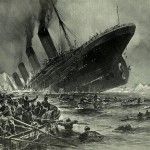ENVIRONMENT & BACKGROUND
China is a rising world power with: increasing international economic power; improving military strength; tumultuous social issues. Exiting from the recent global economic and financial crisis, China sees itself strengthening and growing while America (and much of the ‘Western’ world) struggles to recuperate. This recovery disparity has given support to Chinese sentiment suggesting the superiority of Chinese policy and social culture.
China’s newfound (or newly revived) superiority complex has complicated American interaction with the government, where China now appears to be doing everything it can to avoid looking weak and to resist US/Western influence. With China’s rise, incentives for America to pressure democratization, establishment of free market economics, and improvement of human rights have grown in intensity. The US has very direct interests in the ‘Westernization’ of China and China does see benefits to cooperation, however they seem to resist or avert most American challenges to the Sino-status quo.
AVAILABLE OPTIONS
America can become aggressive, passive, apathetic, or cooperative in its relationship with China. The US could seek to dominate China, let China strengthen its own dominance, ‘step out of the picture’, or work with China to grow and develop both countries simultaneously.
It is more likely that the US will work to cooperate with China, perhaps doing so with a passive-aggressive bias that asserts American interests without direct systemic attempts to alter Chinese institutions. China and the US have committed to positive and cooperative relations, however it can be expected that such a commitment will only be honored as long as it serves the interests of both states.
INFLUENCES
Differences over human rights, domestic/foreign policy, democratization, and economic/financial theory and practice will greatly influence how the two states interact. Economically and politically it behooves both states to cooperate in the short and long runs. Also, much of Asia supports and welcomes American presence in the region. As long as the US restrains itself from imperializing the region and overthrowing China’s presence, and as long as China does not attempt to oust America, a relatively stable base that assures permanent presence of both parties in the region can be used to develop further policy on.
America is influenced by its democracy, free market policies, and strong human rights, as well as its desire to impose these principles on other states. The base previously described provides the US with a simple supportive argument; ‘if we’re both going to interact in the same place, we better learn how to interact productively’. The simple presence of such an argument influences America’s decisions as it provides a point China cannot ignore.
The US is very economically interested and invested in the greater Asian region. America will surely seek out policy that improves US — China relations, however it will levy importance on policy that enhances economic efficiency and effectiveness in the region (perhaps at the expense of US — China relations).
Another great influence on America’s decision making process is the power China has in the international system. As a permanent member of the UN Security Council, China’s ability to veto measures and resolutions greatly affects America’s (perceived) international power. Learning to effectively interact with China would improve international US — Chinese efforts.
FINAL DECISION/RECOMMENDATION
US — Chinese relations should focus around three main points: policy cooperation; healthy economic competition; political and cultural respect.
The US should help China grow as a world power, including it in international issues and decision making processes as well as new and/or existing trade organizations. By helping China to grow it shows America is interested in seeing the country develop rather than restraining it. This will make negotiation easier and will help to keep China from making extremist policy decisions. Cooperation shows desire for mutual progress.
Provision of challenging economic competition motivates economic improvement and progress. China artificially inflates its currency, dramatically boosting its exports. However, China has realized it cannot grow/mature on export economics. The US should focus on aiding China to develop its own domestic market. As China’s economy develops, its growth rate will slow as it begins to peak its international efficiency under current economic conditions. China will not remain a manufacturing economy forever. When export-based economic policy no longer supports the country the way it does now China will have to consider new ways to compete efficiently and effectively, and the best way (and currently only way) to do so is to enact free market economic policies. Establishing and continuing healthy economic competition (with reduction of protectionist barriers) will naturally drive China towards free market economics over time as China becomes dissatisfied with its socioeconomic disparities, low GDP-per capita, lack of economic diversification, and constant threat of unemployment-related unrest.
Henry Kissinger stated, “Lecturing a country with a history of millennia about its need to ‘grow up’ and behave ‘responsibly’ can be needlessly grating”. Including China in important international and regional decision making processes shows respect to Chinese policy makers and culture. China is attempting to assert new power domestically, regionally, and internationally. Though the US is concerned with China’s growing power and influence, America needs to realize the main challenge for China has been to maintain domestic stability while simultaneously maintaing sustainable economic development. By respecting Chinese sovereignty and withholding from direct intervention and overly-aggressive assertion, Chinese policy makers are less likely to become defensive. China is intent on showing the world its strength and capability as an important and powerful international and regional actor. Allowing China to develop respect will give America a long-term edge in policy making. The US does need to constantly voice its stance on human rights, economic development, and democratization, though. Failing to maintain its stance would render the US as weak/defeated in Chinese eyes.
DECISION EXPLANATION/RATIONALE
China does not desire poor relations with the United States. Both the US and China want good, stable relations that maximize the capabilities of the two states to seek their own interests while allowing a degree of economic, political, and social cooperation to exist. However America is the regional hegemon. China seeks to displace America. In seeking to displace America, China will resist American influence.
There is a common Chinese perception that the US is damaged/weakening while China is growing and becoming stronger. China will do anything to prevent itself from appearing weak, influenceable, and without regional/international political, economic, and social clout. Therefore, the US should refrain from attempting to directly influence and intervene in Chinese policy as this will only galvanize Chinese self-inflated power and make current and future cooperation more difficult. China will not accept foreign ideas, suggestions, or demands as this would make it look inferior to and impressionable by foreign states. If the US wants to change China it needs to make China believe itself that US-desired reform is in its best interest.
The US needs to get China to come to democratization, free market capitalism, and associated levels of human rights on its own accord, as US intervention will only make these doctrines less attractive to Chinese policy makers. By cooperating on policy development, continuing economic competition, and respecting Chinese sovereignty (and dignity), the US puts itself in an advantageous long-term relations position.
Read the original post at bmseifert.com.









